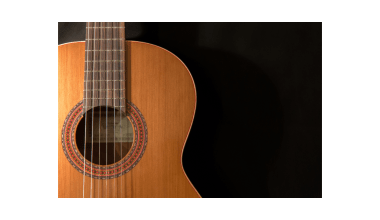How to Write a Song: Your Complete Guide
Writing a song may seem challenging at first, but anyone can do it with the right guidance. Whether you’re looking to express yourself, impress your friends, or start a music career, songwriting is an incredible way to share your creativity. In this guide, we’ll explore every step of the process so you can confidently learn how to write a song.
1. Why Should You Write a Song?
Writing songs is one of the best ways to express your emotions and share your story. Songs can:
- Help you process feelings.
- Inspire or connect with others.
- Create lasting memories.
Whether you’re doing it for fun, a hobby, or a career, learning how to write a song opens the door to endless possibilities. Plus, with platforms like Beatport, you can even share and sell your music with the world!
2. Start with an Idea
Every song starts with an idea. Don’t worry if your idea feels small—it’s like a seed that will grow as you write. Here’s how to find inspiration:
- Think about your emotions. Are you happy, sad, or excited? Use those feelings as a starting point.
- Look around you. Nature, people, and even everyday situations can spark ideas.
- Listen to your favorite songs. What do they talk about? Can you create something similar?
Keep a notebook or use your phone to jot down ideas when they come to you. These ideas will form the foundation of your song.
3. Decide on the Message of Your Song
Once you have an idea, think about what you want to say. Every song has a message or story, even if it’s as simple as “I’m happy today.” Ask yourself:
- What do I want people to feel when they hear this song?
- What story am I telling?
- How will this song connect with listeners?
For example, if you’re writing about love, decide if your song is about falling in love, heartbreak, or celebrating a special relationship.
4. Understand Song Structure
A good song has a clear structure. Think of it as a recipe that gives your song a shape. Here’s a simple structure you can follow:
- Verse: This is where you tell the story or set the mood.
- Chorus: The most memorable part of your song. It often repeats and delivers the main message.
- Bridge: A short section that offers something different—like a twist in the story.
You can experiment with this structure, but it’s a great place to start if you’re new to songwriting.
5. Writing the Lyrics
Lyrics are the words of your song. Don’t worry about being perfect at first. Focus on writing what feels right to you. Here are some tips:
- Start simple: Use words you’re comfortable with. You don’t need to sound fancy.
- Make it personal: Write about something you know or feel deeply.
- Use rhymes carefully: Rhyming isn’t a rule, but it can make your song catchy. For example:
- “I feel so high, like I can touch the sky.”
- Tell a story: Take listeners on a journey. Where does the story start, and where does it end?
6. Create a Melody
The melody is the tune people will hum or sing. You can create a melody by:
- Singing your lyrics aloud and experimenting with different tunes.
- Playing around on an instrument like a guitar or piano.
- Humming random notes and seeing what sticks.
Remember, your melody doesn’t have to be complicated. Many famous songs are built on simple, catchy melodies.
7. Choose Chords for Your Song
Chords are the backbone of your song. If you play an instrument, like the guitar or piano, experiment with chord progressions. Here’s a popular beginner-friendly progression:
C – G – Am – F
Even if you don’t play an instrument, you can use free music apps to try different chord patterns. Matching the chords with your melody is key to creating harmony.
8. Add a Hook
The hook is the part of the song that sticks in your listener’s mind. Think of it as the “highlight” of your song. Usually, it’s found in the chorus.
- Keep it short and catchy.
- Make it repeatable.
- Use strong, simple words.
For example, in Taylor Swift’s “Shake It Off,” the hook is the repeated line:
“Shake it off, shake it off!”
9. Recording Your Song
Recording your song doesn’t need expensive equipment. Start with what you have:
- Use your phone or a free recording app.
- Record your voice along with a simple guitar or piano.
If you want to make your recording sound professional, consider using software like GarageBand or FL Studio. These tools help you add layers, effects, and polish to your song.
Once your song is ready, you can share it online. Platforms like Beatport are perfect for selling and promoting your music. Here’s how:
- Create an account: Sign up on Beatport and set up your artist profile.
- Upload your track: Make sure your song is mixed and mastered for good sound quality.
- Promote your music: Share links on social media and ask friends to support your work.
11. Overcoming Songwriting Challenges
It’s normal to feel stuck or doubt yourself. Here’s how to push through:
- Writer’s block: Take a walk, listen to music, or try writing in a different environment.
- Perfectionism: Remember, no song is perfect. Focus on expressing yourself.
- Fear of sharing: Start by sharing with close friends or family for feedback.
12. Practice Makes Perfect
Songwriting is a skill that improves over time. The more you write, the better you’ll get. Don’t be afraid to experiment, make mistakes, and try new ideas.
Final Thoughts
Learning how to write a song is a rewarding journey. With practice and patience, you can turn your thoughts and feelings into music that connects with others. Remember to enjoy the process, stay true to yourself, and keep creating.
Whether you’re writing your first song or your hundredth, the most important thing is to have fun. Your voice matters, and the world is waiting to hear your music!
This guide has covered everything you need to know about how to write a song, from finding inspiration to sharing your music with the world. Now it’s time to pick up your pen, grab your instrument, and start writing. Good luck!
Related Articles:
For further reading, explore these related articles:
- Ways to Beat Writer’s Block – Songwriter’s Edition 2024
- How to Launch Songs on Spotify: A Complete Guide
- Co-writing a Song Remotely? Here’s How You Can Prep in 2024
- The Role of Attorneys in Music Contracts
For additional resources on music marketing and distribution, visit Deliver My Tune.






